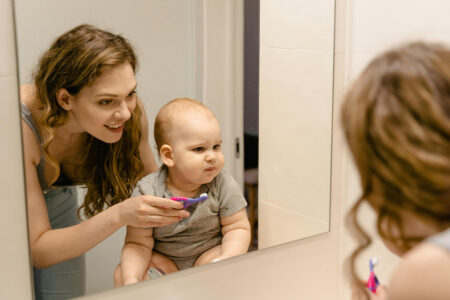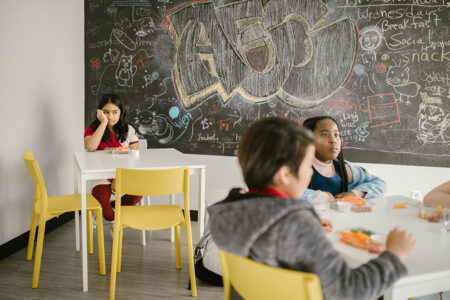At the tender age of six, it was my youngest who first helped me understand what twenty-first century bullying looked like.
“Mommy, please don’t put raisins in my lunch anymore,” she said flatly, while going through her backpack after school one day.
“Nobody likes raisins, and I don’t want to eat them.”
“But you like raisins,” I replied. “A lot. Does that count for something?”
Apparently not. Because one girl at her school who did not like raisins was convinced that no one else should bring them in their lunch. In this little bully’s effort to tear down raisin repute class-wide, she sought to dismantle the self-respect of every raisin-loving first grader at the lunch table.
Until then, I’d had a fairly traditional view of bullying. Think Scut Farkus from A Christmas Story physically abusing Ralphie on the way home from school, Biff Tannen mercilessly bullying George McFly in every single Back to the Future movie, or Jody Angus from my childhood verbally abusing us parochial school kids as we walked home in our plaid jumpers.
I would have a lot to learn.
Unwanted, aggressive behavior among school-aged children that involves a real or perceived power imbalance. That’s a good definition of bullying. Today, it’s a concept that is so comprehensive that the number of children who fit under its massive umbrella – including targets, bystanders, and of course, bullies themselves – is growing every day, right along with our kids.
For me, this has meant that even if you think you’re raising a relatively typical child, some kid, somewhere will decide that publicly sharing his or her opinion about your child’s body (bony or plump), grades (good or bad), hair (long or short), or skin (white, brown, rashy, or oily) is more important than your child’s wellbeing. Even lunchbox choices – and I’m not just talking raisins, folks, but also hard-boiled eggs, cottage cheese, and store-brand anything (cereal bars, string cheese, yogurt) – could come under fire.
Add to this all the technology and social media for strategically and anonymously launching emotional missiles and you realize that these days, there is a bully out there for most everyone and everything.
Obviously, some bullying is different. There are tragic cases of cold-blooded, intentional cruelty, like the Carrie-level stories of sociopathic teens horrified parents will only read about online or watch in a Netflix movie based on a true story. If you start a dialogue with your kids about what bullying looks like at their school, it’s more likely to be that one kid (the raisin hater is a good example) who is convinced that everything he or she has to say is important. You can chalk it up to a simple, yet sad, truth: There are obnoxious people in the world who say ignorant things and pass judgment on others to make themselves look and feel more powerful.
To keep from raising a bully, families need to talk about the benefits of diversity at home with kids. Parents can strive to model and teach acceptance of all people and things (yes, that includes food choices). By doing this, we prepare our children to move through the world demonstrating respect for all traditions and compassion for all living things.
Like the time my youngest mentioned that a student in her PE class was getting unwanted attention in the locker room. This girl wasn’t a close friend, but my daughter wondered aloud what she could do to help her. Eager to cast my child in the hero role, I was ready with a few Mom-flavored suggestions. Big sister had some ideas of her own. “You can just stand by the girl so she doesn’t feel so alone,” she said. “Or get dressed in front of her so the other girls can’t see her.” Pretty good stuff.
Listening to these ideas, I recalled my gut reaction as a parent during the infamous raisin eradication campaign of first grade. Originally, I had considered three options: 1) talking to the teacher, 2) confronting the raisin hater’s parents, 3) joining my daughter for lunch one day with my own box of raisins. I also armed my child with verbal jabs to put this little bully in her place, none of which she ever used, of course. Ultimately, I stepped back and did exactly what my daughter asked of me: I stopped putting raisins in her lunch.
For the next few months, my baby lived without raisins and managed to steer clear of the bully. It was her decision and in the end, a small price to pay for some peace and quiet at the lunch table. The takeaway? As terrifying as the thought of bullying in school is for many parents, most of us will have the opportunity to help our kids find their way through the minefield of adolescence. With love and support, most kids will emerge triumphant and tolerant if we give them the chance to develop solutions on their own terms. And who knows, they might even still like raisins.







